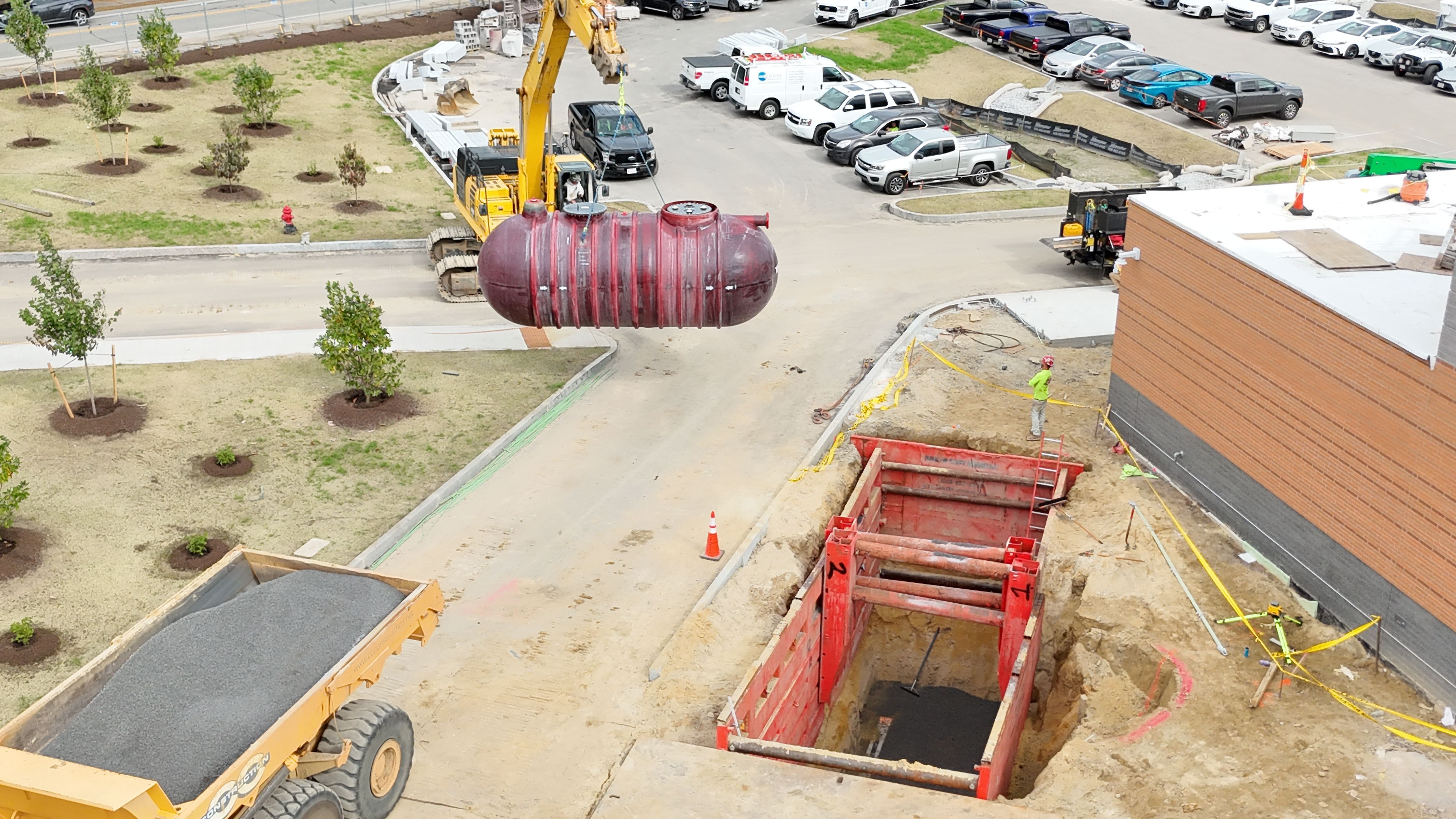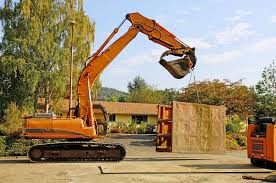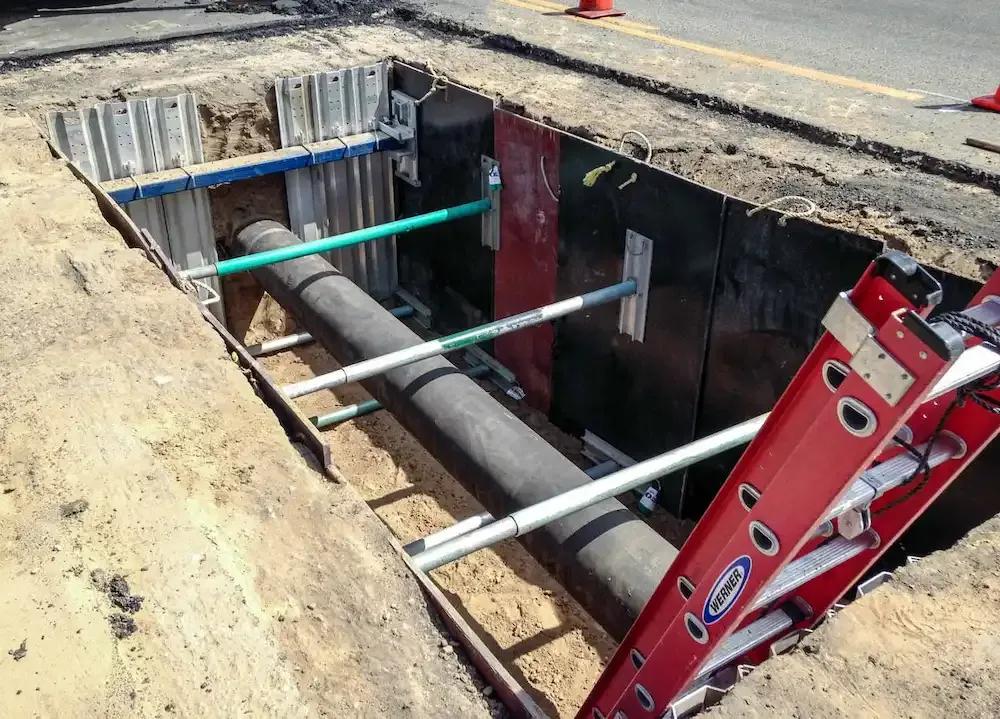When you’re opening the ground in tight urban streets, mixed soils, or high-traffic corridors, safety isn’t optional it’s the plan. North East Shoring Corp. supports contractors across the Northeast with shoring services, trench shoring systems, and trench box rentals that keep crews protected and schedules intact. From short utility tie-ins to deep excavations for structures and infrastructure, choosing the right excavation support systems is the difference between steady production and costly stoppages.
This guide breaks down core shoring options, how to match a system to your site, and the day-to-day practices that prevent cave-ins, utility strikes, and rework.
Why Shoring Matters on Northeast Jobs
The Northeast blends aging utilities, variable glacial soils, groundwater, and dense traffic. That reality makes construction safety shoring a first-order task:
- Worker protection: Prevents wall collapse in trenches and pits.
- Schedule certainty: Stable walls mean fewer interruptions from sloughing or weather.
- Quality and compliance: Controlled excavation limits over-excavation, settlement, and damage to adjacent pavements and structures.
- Cost control: Right-sized systems reduce standby time, material overruns, and emergency remobilizations.
Core Trench Protection & Shoring Systems
1) Trench Boxes (Trench Shields) Rugged steel or aluminum panels with spreaders that protect crews in linear utility trenches. Ideal for trench box rental in the Northeast where quick moves and frequent resets are common. Best for: utility laterals, main replacements, service tie-ins.
2) Hydraulic Aluminum Shoring Lightweight, quickly deployed hydraulic shores press against trench walls to prevent movement—great where equipment access is limited. Best for: short runs, spot repairs, shallow to moderate depths, tighter rights-of-way.
3) Slide Rail Systems Modular rails and panels installed from the surface as you dig, creating a safe pit without large open cuts. Best for: deeper utility structures, manholes, vaults, lift stations, and long durations.
4) Beam & Plate / Soldier Pile & Lagging Driven or drilled soldier piles with timber/steel lagging; customizable to irregular shapes and deeper excavations. Best for: basements, shafts, and sites with adjacent structure sensitivity.
5) Sheet Piling (Temporary) Interlocking sheets vibrated or driven to create continuous walls—excellent for water control and tight footprints. Best for: waterfront work, saturated soils, and deeper cuts needing cutoff.
6) Shores, Braces, and Struts Engineered cross-lot bracing or strutting for wide excavations or where tiebacks aren’t feasible. Best for: urban shafts, staged construction, load-sensitive surroundings.
Matching System to Site Conditions
Choosing the correct excavation support system starts with five essentials:
- Soil and Depth Know your soil type (cohesive vs. granular), water table, and excavation depth. Cohesive clays behave differently than sands or fills; deeper cuts increase lateral pressures and influence system choice.
- Footprint and Access Urban alleys versus open ROWs drive equipment selection. Limited access often favors hydraulic shores or segmental systems; wider corridors allow boxes, slide rail, or sheet pile.
- Utilities & Adjacent Loads Map existing utilities and consider surcharge from roads, trains, or nearby foundations. This often pushes you toward engineered systems (slide rail, soldier pile, sheet pile).
- Groundwater Management Dewatering, well points, or cutoff walls (sheeting) may be required. Stable water control reduces wall movement and floor heave.
- Duration & Reuse Short, mobile work favors rental trench boxes and aluminum shores; multi-week structures and deeper pits justify slide rail or soldier pile solutions.
North East Shoring’s team can review plans and borings to recommend the safest, most cost-effective match.
Rental, Delivery, and Site Logistics
Trench box rental and other temporary systems are most effective with tight logistics:
- Pre-stage by phase: Deliver the first system set to the first dig area; keep the next set queued to avoid idle crews.
- Right sizing: Match panel heights and spreader lengths to trench depth and width; oversizing slows production.
- Rigging & handling: Confirm lifting points, equipment capacity, and laydown space—especially in city streets.
- Inspection on arrival: Check pins, collars, welds, cylinders, and seals before first set.
- Return & swap: For multi-phase projects, plan swap-outs for different depths or geometries as the job evolves.
Field Practices That Keep Crews Safe
- Daily checks: Inspect for cracks, bent members, hydraulic leaks, and proper pinning/locking before entry.
- Set at grade, then dig: Lower systems as excavation progresses; never work beneath suspended panels.
- Stay inside protection: Workers enter only when the system is set to required depth and properly braced.
- Ladder access & spoil set-back: Maintain safe ingress/egress and keep spoil/plant away from trench edges to limit surcharge.
- Atmospheric awareness: In deeper, confined, or utility environments, monitor air quality as required.
- Weather watch: Rains can reduce stability quickly; reassess wall conditions and reset supports after storms.
Special Cases: Pits, Crossings, and Structures
- Manholes & Vaults: Slide rail or beam/plate with internal struts creates box-outs for precise structure placement.
- Road Crossings: Phased excavation with shorter boxes or staged sheet piles keeps lanes open and traffic loads managed.
- Building Adjacent: Preconstruction surveys and monitoring (settlement points, inclinometers where needed) protect neighbors and document performance.
Soil Stabilization & Ground Improvement
Where soils are loose, saturated, or collapsible, soil stabilization shoring strategies can support shoring performance:
- Compaction grouting or jet grouting to densify or create blocks.
- Freeze or chemical stabilization in extreme seepage/void conditions.
- Geosynthetics and matting for working platforms and haul routes.
These measures enhance bearing, limit raveling, and improve constructability around the shoring system.
Working with Shoring Contractors in the Northeast
A capable partner brings more than hardware. Look for:
- Engineering support: stamped designs, site-specific calculations, and alternates for tricky utilities.
- Inventory depth: multiple box sizes, hydraulic shores, slide rail kits, beams/lagging, and sheet pile to fit changing conditions.
- Response & delivery: same-day or next-day options minimize downtime.
- Training & toolbox talks: onsite guidance for safe installation and removal.
- Maintenance & inspection: rental fleets that arrive ready to work.
North East Shoring Corp. combines all of the above with practical field experience on the exact soils, streets, and permitting environments you build in every season.
Conclusion
Safe, efficient excavation in the Northeast depends on choosing the right trench protection systems and executing them with discipline. Whether you need a fast trench box rental, engineered slide rail, or comprehensive excavation support systems, aligning system, soil, and schedule is what keeps people safe and projects moving. With seasoned planning and reliable gear, your crews can dig confidently—even in the tightest, busiest corridors.




